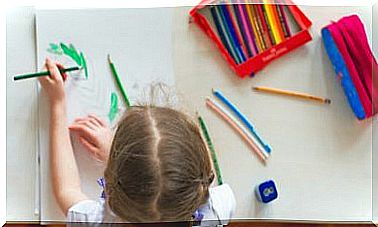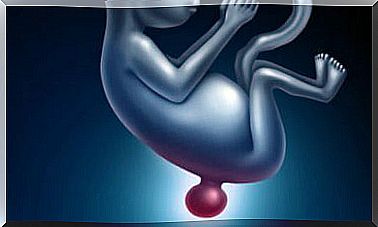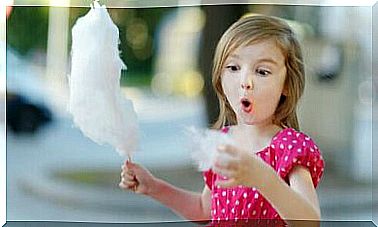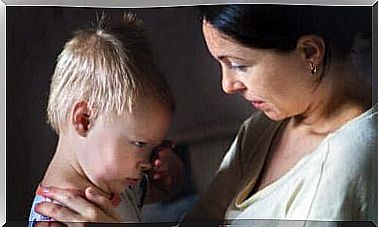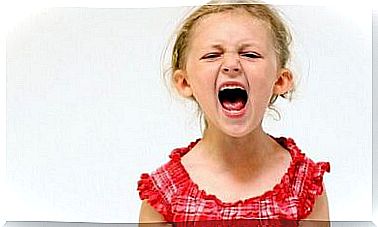How To Analyze Children’s Drawings According To The Colors Used
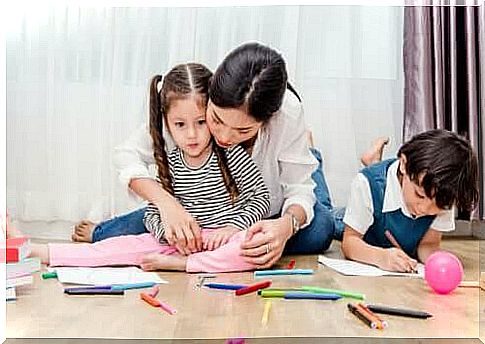
Children’s drawings can tell us a lot about their personality, their relationship with their surroundings and their emotional management. Here, we will learn to analyze children’s drawings according to the colors used. However, although parents can draw some conclusions, it is always convenient that the interpretations of the drawings are done by a professional.
It is important that, in interpreting the children’s drawings, we pay attention to all the details, as they are all telling us something about their personality. We must pay attention to the position, size, ornamental details of the drawing, the pressure of the pencil when drawing and even the lines. However, what can give us more information about their emotional development are the colors used by the child when painting.
Do you want to know what the predominant colors in your child’s drawings mean and what they might say about your child’s personality? So keep reading.
Things to keep in mind when analyzing children’s drawings according to color
Before starting to see the meaning of each color in the children’s drawings, let’s look at some aspects that must be considered for a correct interpretation.

In addition to the colors, take into account other aspects
When analyzing a child’s drawing, we have to contemplate the drawing in a global way, with all its details, the child’s age, the shapes of the stroke, the intensity of the stroke, its location on the paper, position, etc.
It is not an exact method and there may be errors in the evaluation
Despite this, these techniques are very useful, especially in children, as they are simple and can be fun. Through them, we can detect if the little ones have some problems that, otherwise, we certainly could not. Children have a hard time expressing what they feel verbally.
Hypotheses formulated by child psychologists should always be verified through another, more structured assessment, but the drawing will always be a much-needed complement to an overall psychological assessment of the child.
Color characteristics vary according to hue
Colors that tend more towards a pastel tone or are applied softly indicate that we are facing a calmer and more emotional personality. Meanwhile, brighter or more striking colors are related to more intense feelings, which can be negative (aggression) or positive (love).
To analyze children’s drawings, it is important to note whether colors are used optimally
That is, if the child uses the colors according to what is seen in reality. This happens from the age of 7 years. If a child paints a sun yellow or a meadow green, we can analyze them according to color, but if the child paints the sun green, we have to take into account why there was this change from the corresponding color in the drawing. It can be to draw attention, to transgress the rules, for creativity, for impulsiveness… This must be analyzed.
Analyze children’s drawings according to color
Now that we know some things to consider, we can have an afternoon of painting with our son to see if, through his drawings, we can get to know him a little more. Come on? Remember that, in order to analyze, it is important to look for a predominant color in your creation.
Blue
Blue gives a feeling of calm, balance, tranquility. Introverted and shy children use this color predominantly in their drawings. This can also tell us that this is a thoughtful and sensitive child. An excess of blue color or intensity may be telling us that there is a bedwetting problem.
pink
While some people think pink is unique to girls, it’s not quite like that. Both boys and girls can use colors equally and this color indicates that we are facing dreamy and very creative children. On some occasions, you can point out that the child has a need to escape their reality or a great creativity.
Green
Like the color blue, it denotes a calm and sensitive child. If this color is used on elements other than green, it tells us that there may be a certain presence of maladjustment and rebellion.
Orange
The predominance of this color indicates that we are facing a very sociable child, who likes to be in contact with other people, very active and impulsive, who may even have problems concentrating on a certain task.

black
Although for adults black gives a feeling of sadness, in this case it indicates power and elegance. Children who wear this color are perfectionists, although they can also be a little introverted and aloof with others.
Brown
This is the color most used by prudent and responsible children. If it is used in excess, we have to take care that the little one is not losing childhood things due to an excess of responsibility.
Yellow
Yellow is a color that tells us that this is a very sociable child, happy and full of life. However, if it is used excessively, it can indicate the presence of tensions and emotional problems.
Red
It is a color often used by children, probably because of its intense tone. If used sparingly, it denotes a child with a lot of energy and passion. However, if there is an excessive use, it would indicate that there may be problems with aggression, lack of balance and hostility.
Violet
This is a color related to melancholy and, therefore, its excessive use would indicate that there may be a certain dissatisfaction in the child’s life, which we must stop as soon as possible.
On how to analyze children’s drawings according to color
As you can see, analyzing children’s drawings according to color can tell us a lot about their emotional world, their personality and whether they might be having a problem that we need to solve as soon as possible.
However, this information that we can obtain only serves to guide us and to get to know our child better. They can never replace a psychology professional. It is he who will make a more exhaustive analysis of the child and who will be able to tell us whether or not there is a problem. In the meantime, let’s paint!

